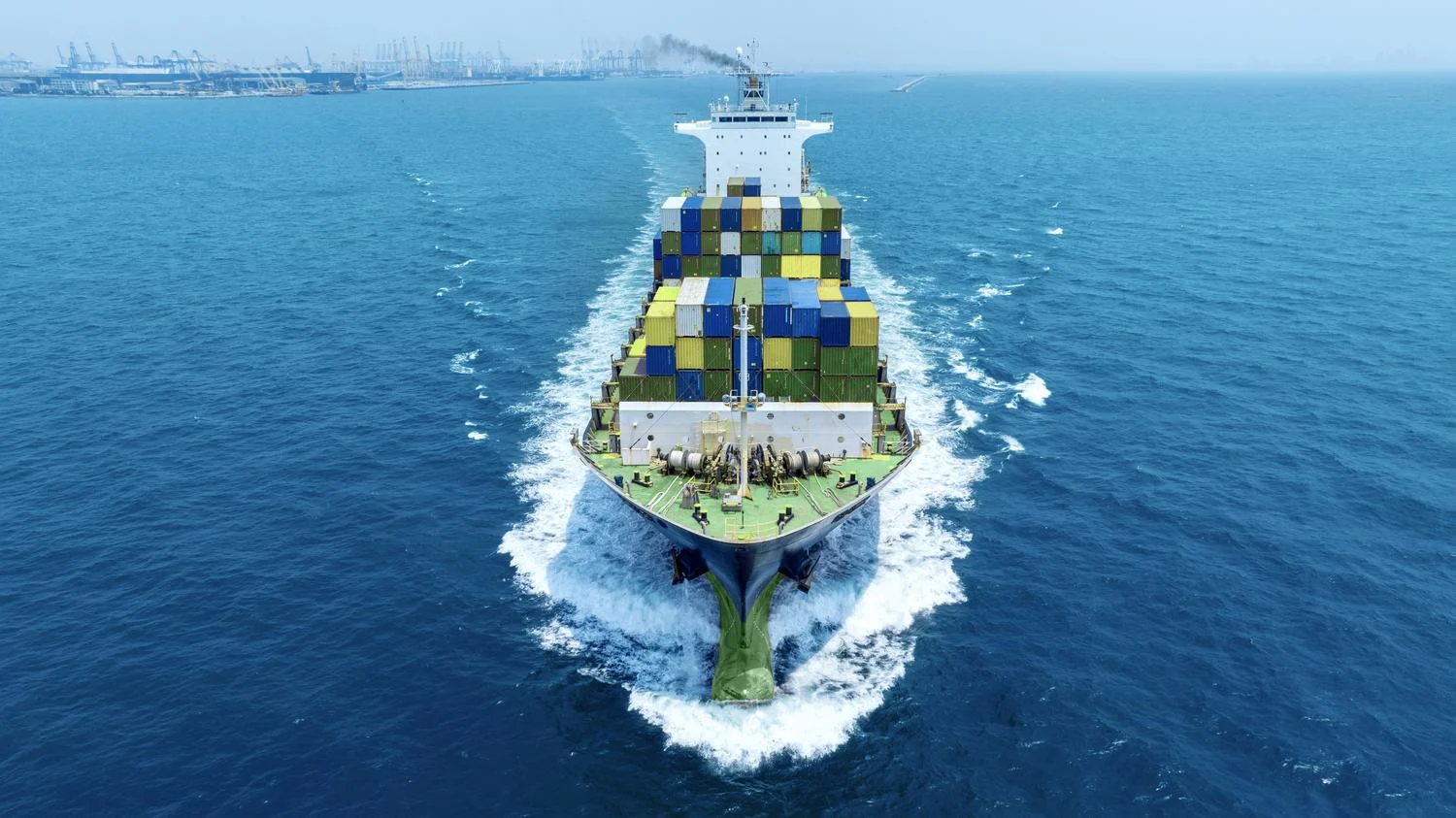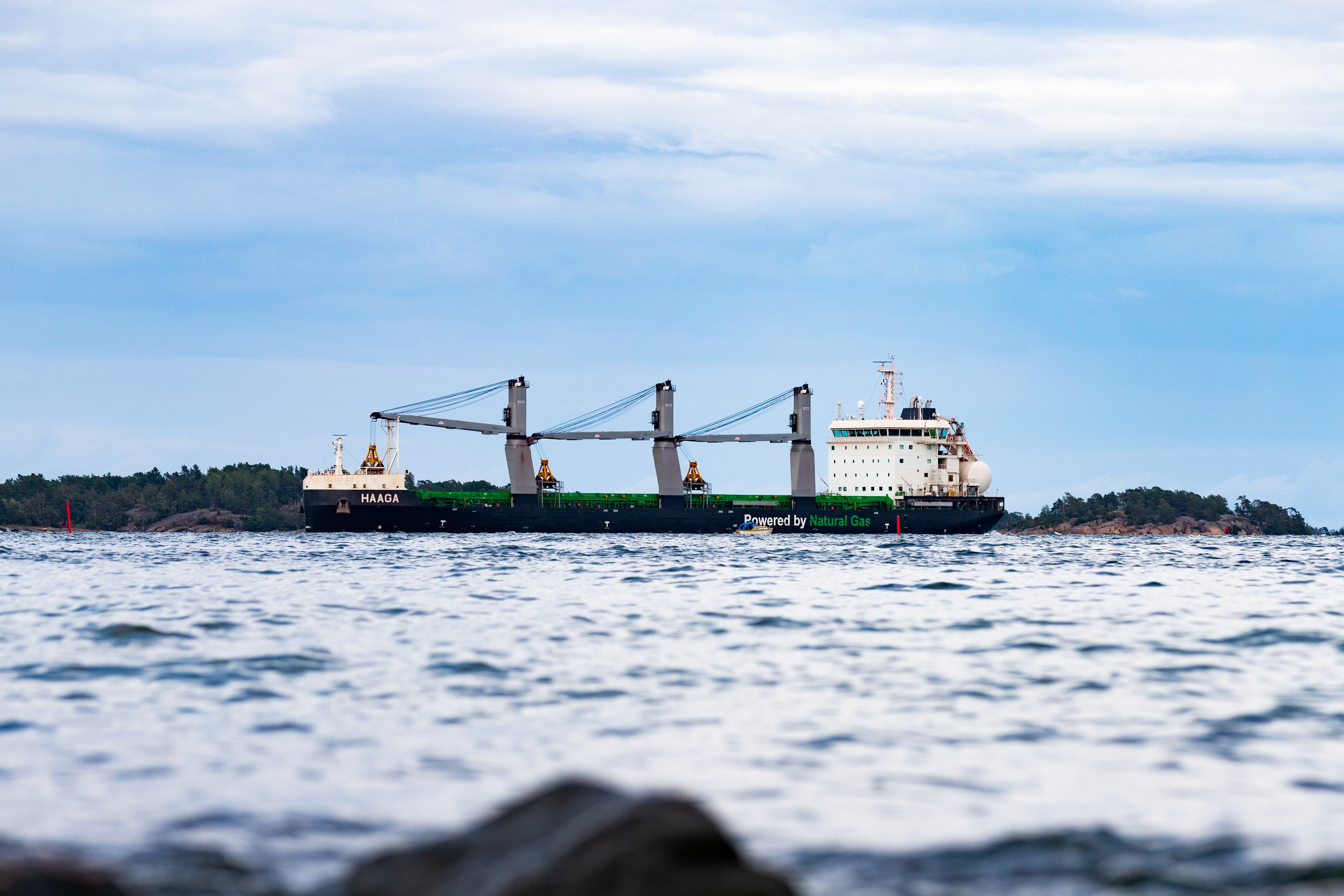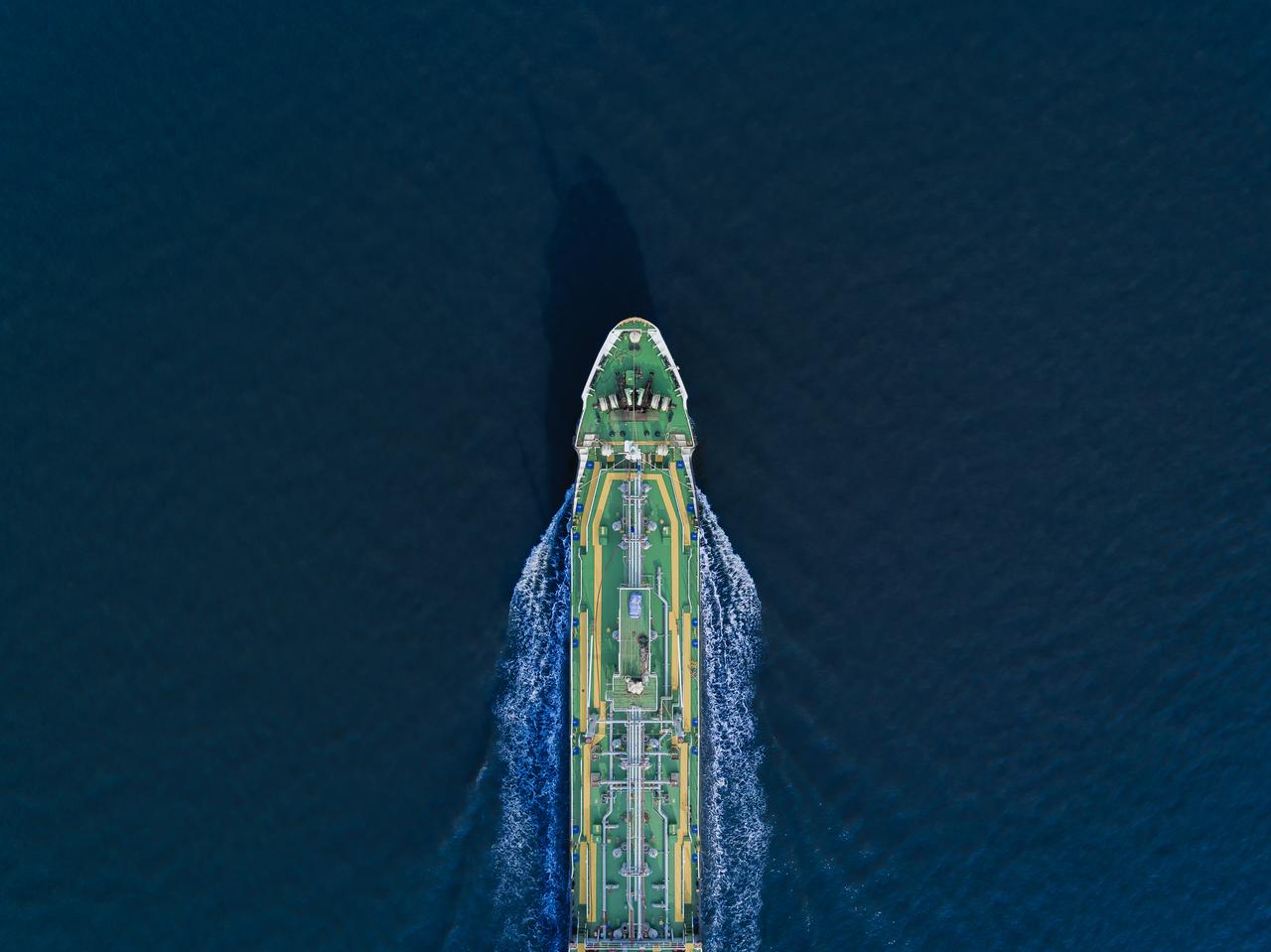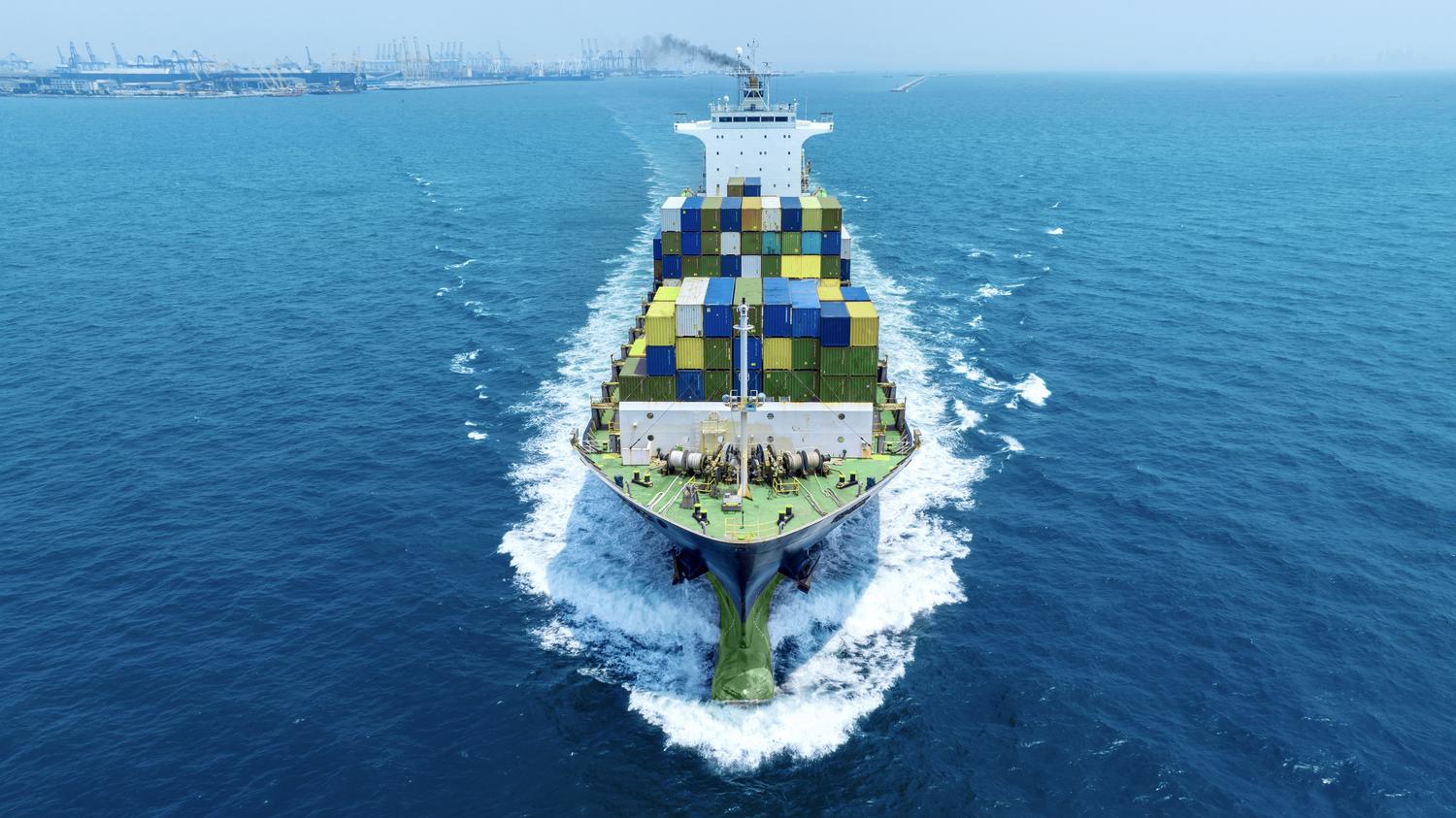
Marine
8 minute read
Towards zero-emission shipping: three key drivers
Shipping is the driving force of global trade, with 90% of all goods shipped by sea. On the flipside it is also a major polluter, emitting 1,000 Mt of CO2 a year, responsible for almost 3% of global greenhouse gas emissions. With ambitious net-zero targets, what are the solutions that will help shipping change its tack?
The International Maritime Organization (IMO) says shipping emissions are set to increase by up to 50% by 2050 unless stringent measures are taken. Meanwhile, the shipping industry has been slow to decarbonize – viable alternatives to fossil fuels meeting the needs of heavy ships and long-haul journeys have been a challenge to develop, and the long lifespan of ships hinders the fast modernization of fleets.
However, momentum for action has been building over the last few years: at COP26 in Glasgow, in 2021, 14 nations pledged to work towards a target of net zero by 2050 for shipping, and a year later the Green Shipping Challenge was launched at COP27 in Egypt.
There are three key themes driving change – policy measures and regulation, immediate short-term fixes and the longer-term development of future fuels.
Policy measures and regulation to tackle the environmental challenges of shipping
Earlier this year, in a move that is set to rapidly accelerate the industry’s decarbonization efforts over the coming years, the IMO introduced stringent targets to cut the sector’s greenhouse gas emissions. At the IMO’s Marine Environment Protection Committee meeting in July 2023, known as MEPC 80, nations agreed that emissions from international shipping should be cut by 20% of 2008 levels by 2030, with a 70% reduction by 2040 and that the industry should be net zero by 2050.
New mandatory energy efficiency reporting for vessels above 5,000 GWT has also been in place since January 2023, providing an important stimulus to reduce their carbon intensity.
In the EU, shipping is being integrated into the European Union’s Emissions Trading Scheme, with 100% of emissions from voyages between EU ports subject to a carbon price, while trips between EU and non-EU ports face a carbon price covering half of vessels’ emissions – the proportion to have to buy allowances will grow incrementally from 40% in 2024 to 70% in 2025 and finally to 100% in 2026. In addition, from 2025, the FuelEU Maritime regulation will require ships in the EU to cut their emissions intensity over time, starting at 2% a year from 2025-2029, rising to 80% by 2050.
Meanwhile, in California, new rules from the California Air and Resource Board (CARB) require commercial harbor craft – including small ferries, large fishing boats and large cargo ships – to switch from fossil diesel to renewable diesel, and similar moves are under discussion elsewhere on the U.S. west coast. “The policy direction is very clear. There are different layers of policy support to promote alternative fuels,” says Carrie Song, Vice President, Renewable Road Transportation, Americas at Neste. She adds: “Policymakers elsewhere should look at the California success story. We need technology-neutral clean fuel programs to be adopted by more cities and states to decarbonize harbor craft.”
Other jurisdictions in the US, the UK and South Korea, for example, are also looking at introducing their own measures.
“When there is regulation, it creates opportunities, and lots of creative people come up with solutions that facilitate the huge amount of investment that is needed,” Sveta Ukkonen, Neste’s global Head of Marine Fuels & Services, sums up.
“MEPC 80 has set the ambitions, but it has not set any policy measures. That is the next point on the agenda,” adds Hannes von Knorring, Principal Consultant at Maritime Advisory Sweden and Denmark for DNV.
Immediate options to reduce emissions from shipping
While new policies and regulations gather pace, there are many things ship operators can do to reduce emissions now.
These include:
Using sails, rotors or kites to help reduce fuel use, which can cut consumption by 25-30%, says the Maritime Executive.
Cleaning the hull and propellers to reduce biofouling and therefore drag, which can save up to 20% of fuel costs, according to the Global Maritime Forum.
Recovering waste heat.
Using digital technology to optimize routes, based on weather conditions.
Using electrical power while at berth rather than the ship’s own auxiliary systems (a process known as cold ironing).
Using a new process called air lubrication, which involves creating a layer of air bubbles beneath a ship’s hull. Marine Insight says that “with the right ship hull design, the air lubrication system is expected to achieve up to 10-15% reduction of CO2 emissions, along with significant savings of fuel”.
Ships can also simply sail more slowly (slow steaming) – reducing ship speed by 10% can lead to a 27% reduction of an individual ship’s emissions.
While these measures are not enough by themselves to meet the IMO targets, they are a good start. “Short-term actions that improve the operational efficiency of existing vessels – saving fuel, money, and time through changes in ship speed and performance – can play a critical role in reducing emissions today, while also preparing for a more manageable long-term transition which will involve more expensive zero-emission fuels and eventually a price on carbon,” says the Global Maritime Forum.
For smaller vessels, or those traveling short distances such as ferries, electrification is an option that is being developed and e-ferries are entering service, particularly in the Nordic region in Europe.
The key to decarbonizing shipping: the fuels of the future
Ultimately the key to decarbonizing the shipping sector is to replace current fossil fuels with lower-emission alternatives.
Co-processed marine fuel for long-haul shipping
New solutions to tackle the challenge of the typically long-haul journeys of shipping are now coming into the market, such as Neste Marine 0.1 Co-processed, launched in 2022. The renewable part of the co-processed marine fuel enables up to 80%* lower greenhouse gas (GHG) emissions over the fuel’s life cycle compared to fossil fuel.
Neste’s co-processed marine fuel is produced by replacing fossil oil with renewable raw materials in the conventional refining process, enabling shipping companies to take incremental steps towards renewable alternatives to cut their carbon footprint.
“Waste and residues account for over 90% of our renewable raw material inputs globally,” says Ukkonen. “Using Marine 0.1 Co-processed doesn’t require any modifications or investments in the fueling infrastructure. The quality has been controlled through the entire process and results in a composition and performance that are similar to conventional marine fuel.”
More sustainable fuels for smaller harbor craft
The new regulations in California are boosting renewable diesel as an alternative to fossil fuel to effectively and immediately reduce emissions for smaller harbor craft in particular.
“With Neste MY Renewable Diesel, GHG emissions can be reduced by as much as 75%-90% over the life cycle of the fuel when compared to fossil diesel. The exact emission reduction percentage reached depends on what raw materials are used to refine the product, as well as the different region-specific legislations that provide the methodology for the calculations,” says Song.
In addition, according to CARB research, renewable diesel, when compared with fossil diesel, can provide up to a 26.6% reduction in fine particulate emissions and up to 11.8% reduction in the emissions of nitrogen oxides (NOx) in harbor crafts equipped with a Tier 2 marine-certified engine.
Neste’s renewable diesel and co-processed marine fuel both have the advantage of being “drop-in” replacements for conventional marine fuels, requiring no alterations to ship engines or fuel infrastructure.
Neste is also exploring electrolysis and Power-to-X solutions to enable the production of hydrogen-based fuels and more.
Next steps to drive decarbonization in shipping
The goal of decarbonizing the shipping sector by 2050 is ambitious. In order to reach it, we need all hands on deck – not just in terms of production of more sustainable fuels, but also through changes to the design of ships and their engines, as well optimization of speed, fleet management and logistics.
“Previously, ship operators did not need to worry about what fuel their ship would run on,” says von Knorring. “That is now changing. While there are a number of ‘usual suspects’ like ammonia, methanol or biofuels, other options such as nuclear and on-board carbon capture are also being considered. Ship owners need to take a stance on which technologies they are going to look at and work with other stakeholders.”
In addition, shipping companies must step up demand, which in turn drives further investments into new solutions. “There is not enough sustainable fuel at the moment, so ship owners need to work with fuel producers, giving them assurance that they will buy their fuel. This will allow the producers to get funding to build production facilities. And for that to happen, ship owners need to also collaborate with the cargo owners to share the risks of engaging in the fuel supply chain like this,” concludes von Knorring.
The shipping industry’s voyage to decarbonization may only just have started, but the elements are in place for exponential progress.
*Emission reduction of the bio-based share of the product over the fuel’s life cycle compared to fossil fuel. The method used to calculate life cycle emissions and emission reduction is guided by the EU Renewable Energy Directive II (EU)2018/2001.
Credits:
Mike Scott, An award-winning business and environmental journalist whose work has appeared in publications including the Financial Times, the Guardian and Forbes.





